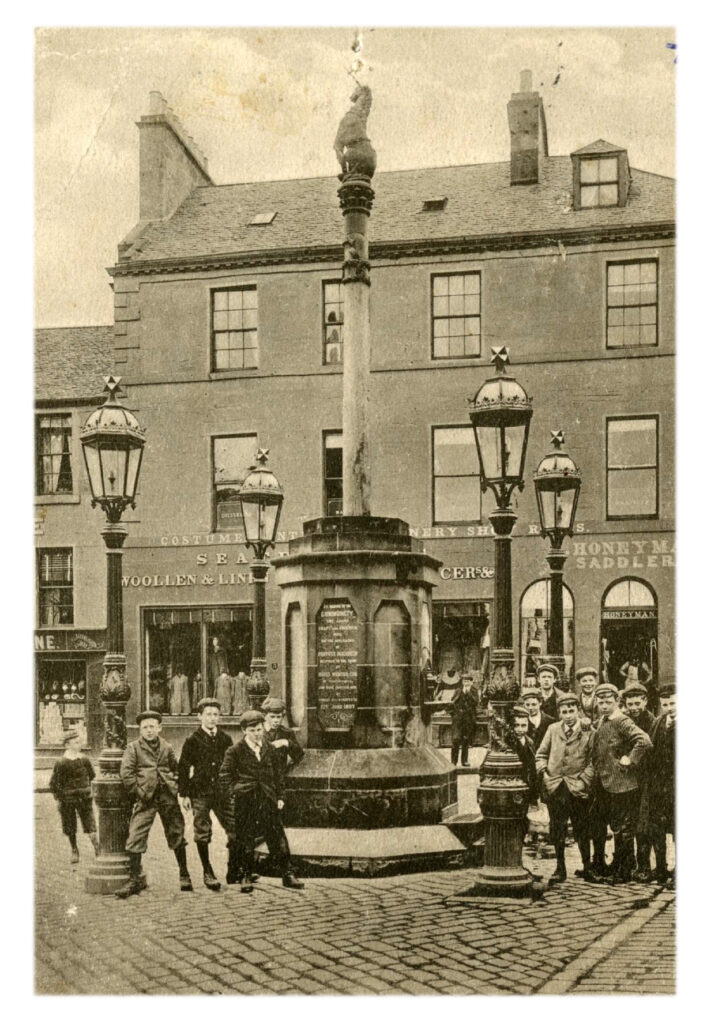Visiting Cupar
“He that will tae Cupar maun tae Cupar”
Old Saying
Cupar is a town with a rich and vibrant history. Its central position has been important from the earliest times, and the name is believed to have Pictish origins. It grew around the site of the medieval Cupar Castle, which was the seat of the sheriff and owned by the Earls of Fife. Cupar was a seat of justice for 600 years, with early justice being dispensed on the Moat Hill. One of Scotland’s oldest royal burghs, it was visited by most of Scotland’s monarchs. From medieval times it was an important trading centre, with routes converging from Falkland, St Andrews, Dundee and Edinburgh. It became the political capital of Fife when Fife County Council was established. In the late 19th century, three weekly newspapers were published at Cupar.
The Old Parish Church in the Kirkgate was originally built in 1415, with the original tower and spire retained when it was rebuilt in 1785. In the Parish Church graveyard, among the memorials is one dedicated to two Covenanters executed in Edinburgh in 1680. Religious strife saw further confrontation at the time of the Reformation when the army of the Lords of the Congregation who supported John Knox gathered to challenge the Queen Regent’s army at Cupar Muir. No blood was shed on this occasion and a treaty was agreed on the nearby Hill of Tarvit.

The Mercat Cross once stood on this hill but was returned to the town centre to mark Queen Victoria’s Diamond Jubilee in 1897. To the north of Cupar stands a 95 foot-high column erected on The Mount in 1826, commemorating Sir John Hope of Rankeillour, 4th Earl of Hopetoun. The Mount was the birthplace of Sir David Lyndsay, best known for his satirical play, “Ane Pleasant Satyre of the Thrie Estaitis”, first performed in Cupar in 1552.
Cupar was naturally the centre for many industries, benefiting from the rail link that opened in 1847. The town’s ambition was clearly demonstrated when the Corn Exchange was erected and opened in 1862 as a centre for farmers and traders to conduct business. The building retains its importance as a centre for community activities. In 1926, Scotland’s only sugar beet factory was erected on the outskirts of the town, with crops being transported by road and rail from across Scotland to be transformed into sugar. The closure of the factory in 1971 led to the eventual development of Cupar Trading Estate, with the iconic concrete silo a reminder of its past. Close to the town, at Uthrogle Mills, is the home of Scotts Porage Oats which has produced the famous brand there since 1947.
A rich agricultural hinterland still provides high quality produce, appreciated by residents from local shops and the monthly Farmers’ Market, while visitors may appreciate the range of choice provided in local restaurants.
Through the centuries Cupar has witnessed and reflected the changing moods of national history, but has always adapted, remaining a self-reliant county town keeping pace with changing times.
As you explore the town centre, whether you arrive by foot, bicycle, car or train, please use the orientation and interpretation signage created to tell some aspects of the town’s past and make use of the QR Codes to open up more information.